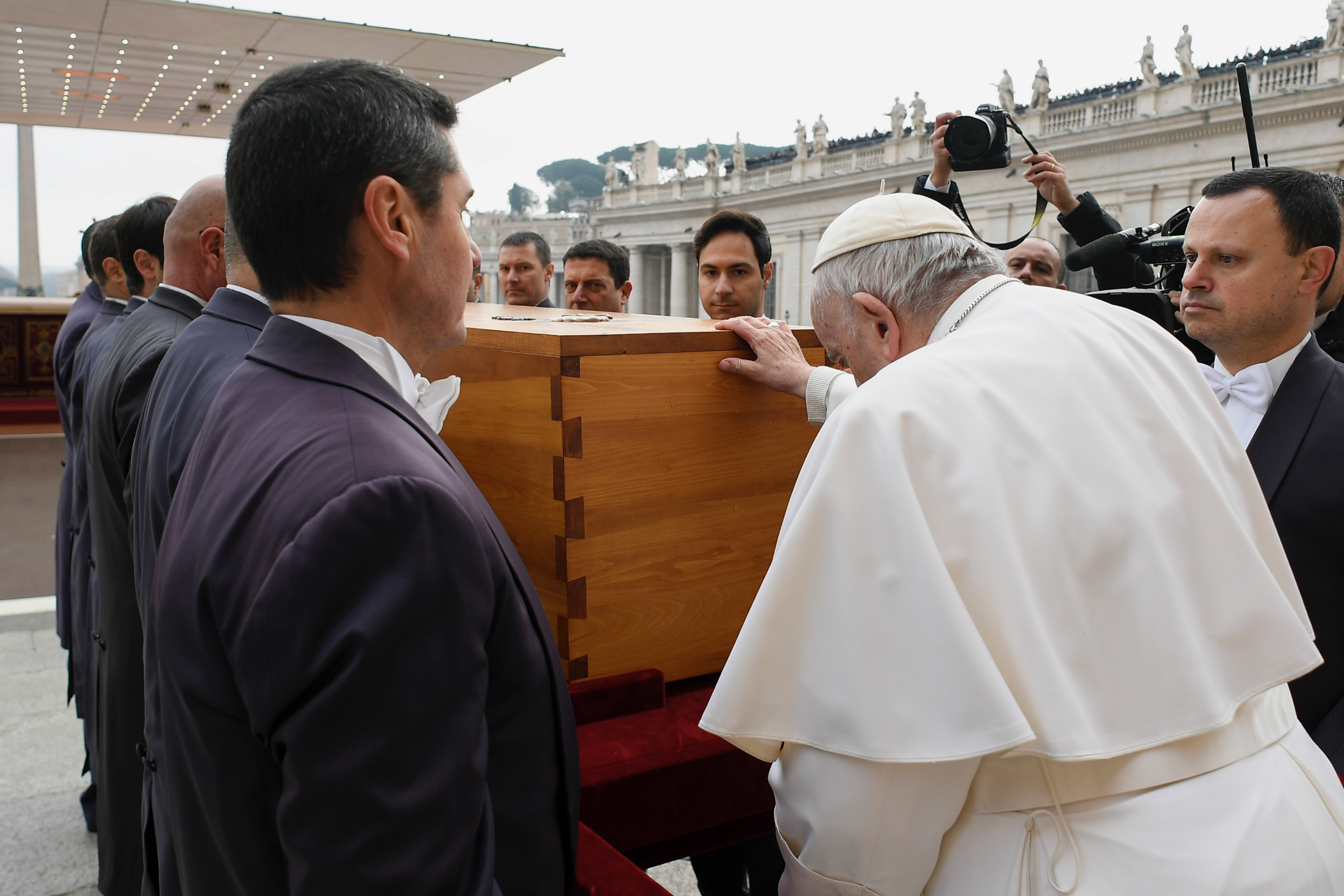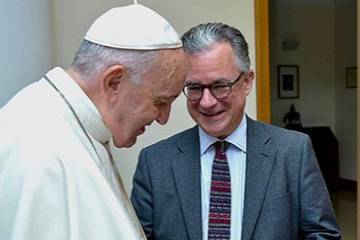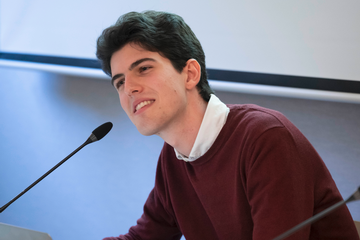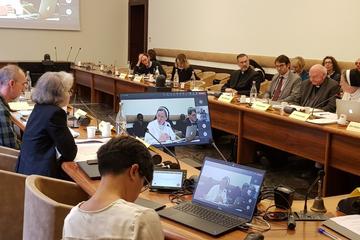
With history being made right before their eyes, those who participated at the funeral Mass of Pope Emeritus Benedict XVI witnessed the end of an unprecedented era – a cycle that began with Benedict’s resignation Feb. 11, 2013, followed by the election of Pope Francis shortly thereafter, and then the long, almost 10-year coexistence of two popes in the Vatican – a “reigning” pope in office and a retired, or emeritus, pope. The word “emeritus” in its Latin origin refers to one who leaves office by merit, after having fulfilled his duty.
That cycle has ended. Benedict XVI's body now rests in the crypt of St. Peter's Basilica, in the same tomb that had been dedicated to Pope John Paul II, whose body was moved into the nave of the basilica after his beatification. Benedict XVI chose to be buried there and, in death as in life, he remains the timid pontiff who succeeded an acclaimed saint.
A serene end
The atmosphere in St. Peter's Square for Benedict’s funeral Mass on Jan. 5 was neither one of great commotion nor of strangeness – even though, for the first time in history, a pope was presiding over the funeral of his predecessor. (There was only one slightly similar historical precedent). The mood on that cold, misty morning was one of serenity, prayer, silence, depth of spirit and simplicity that recalled the reflective personality and introspection of Benedict XVI.
Those present knew the earthly life of the 95-year-old man, whose intellectual, theological and spiritual legacy, which preceded his pontificate, would be remembered and studied for many years to come. They were also witness to the legacy of a pope who marked history by resigning: a Church that continually reforms itself.
Benedict XVI was the first pope to resign due to “lack of vigour,” as he himself said, opening a door that was previously closed. Now, his successors – including Pope Francis – can consider resignation without taboo, discerning this option with the Holy Spirit in prayer.
A lasting tribute
Benedict XVI normalized the presence of two popes in the Vatican – marked by a cordial relationship and simplicity – something that initially seemed quite complex. The last meeting of these two popes was at the conclusion of the funeral Mass, when Francis bowed before the coffin – a powerful image that stays with us. Never before has a pope so honoured his predecessor, envisioning what may one day be his own future.
After four days of tributes to the pope emeritus, to whom thousands of faithful paid their respects at his wake in the basilica, the days of mourning ended with a Requiem Mass, celebrated by Pope Francis. The Mass included most elements of the funeral rite for a pope, except for those particular to a pope who dies in office. The rite of committal was performed by Cardinal Giovanni Battista Re, dean of the College of Cardinals. During the opening prayer of the Mass, Francis prayed: “O God, who in your wondrous providence chose your servant Benedict to preside over your Church, grant, we pray, that, having served as the vicar of your Son on earth, he may be welcomed by him into eternal glory.”
People applauded several times and for several minutes as Vatican officials carried the cyprus wooden coffin with Benedict’s remains in procession. Some people in attendance carried banners that exalted him, with the words in Italian “Benedetto Magno,” which means “Benedict, the great”, or “Santo Subito,” which means “Sainthood now” – a phrase that was also present at the funeral of his predecessor, St. John Paul II.
A Good Shepherd
Pope Francis attributed to Benedict XVI the qualities of the Good Shepherd: "grateful, prayerful, sustained" dedication. The "faithful people" had gathered to entrust to God "the life of the one who was their shepherd," he said in his homily. And, like the women at the tomb of Christ, these people brought "the perfume of gratitude and the oil of hope” to the funeral liturgy.
As per tradition, Benedict’s body was prepared as for a pope, except for the symbols of a reigning pontiff, such as the crosier. Among the medals and coins that were minted during his pontificate, a text that summarizes his biography and main achievements was also deposited in the tomb.
"Endowed with vast and profound biblical and theological knowledge, he had the extraordinary ability to elaborate enlightening syntheses on the main doctrinal and spiritual themes, as well as on crucial questions of the life of the Church and of contemporary culture," says the document.
The document also recalls his words at the time of his resignation from the papacy and at the General Audience that followed two weeks later, on Feb. 27, 2013, when he said: “I will continue to accompany the path of the Church with prayer and reflection, with that dedication to the Lord and to his Spouse that I have tried to live every day until now and that I would like to live forever.”
For believers on earth, this cycle ends; but for Benedict XVI, the cycle reopens in eternity.


